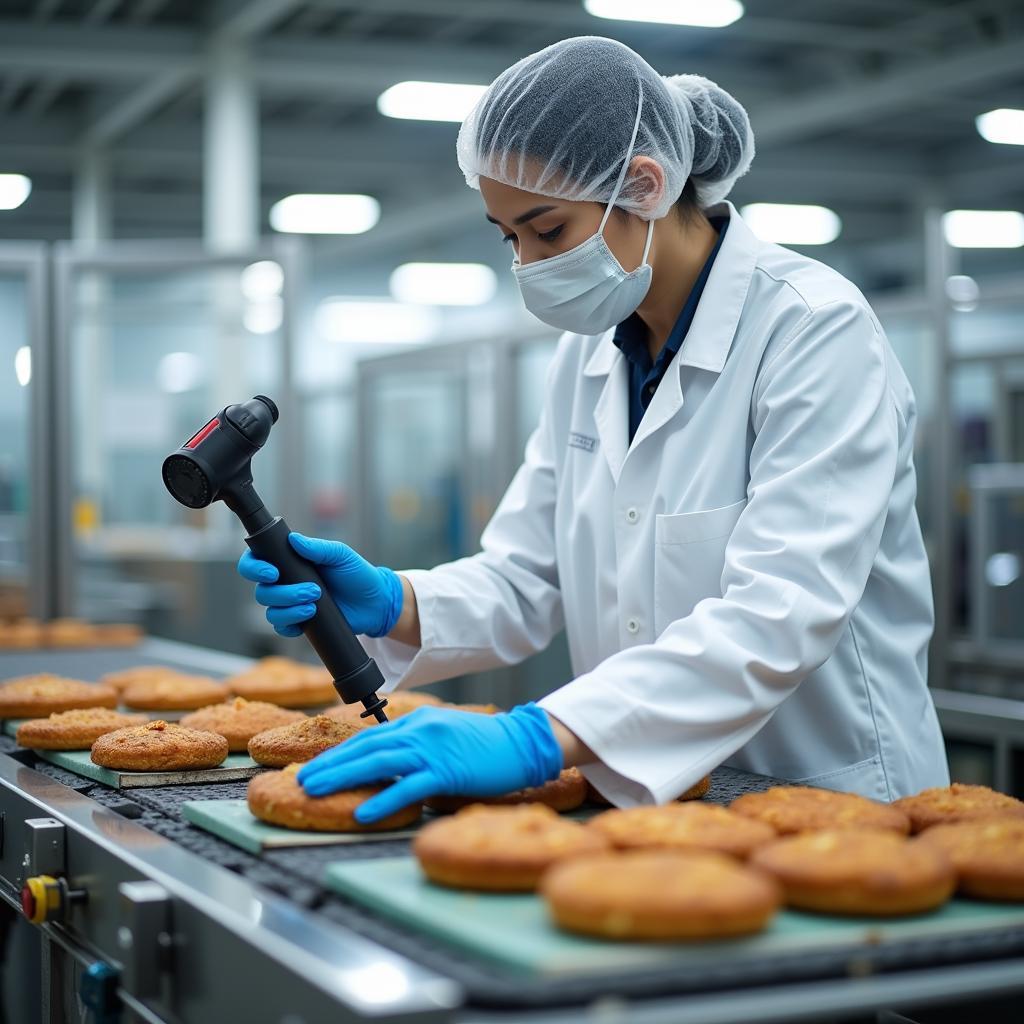The use of metal detector wands in the food industry is crucial for ensuring product safety and maintaining brand reputation. These handheld devices offer a final line of defense against metal contamination, supplementing larger conveyor belt systems by providing targeted inspection of individual products or batches.
Why Metal Detectors Are Essential in Food Processing
Metal fragments can infiltrate food products at various stages, from raw ingredient handling to packaging. Potential sources include:
- Machinery: Worn or damaged equipment can shed metal shavings.
- Packaging: Staples, clips, and foil can contaminate products.
- Raw Materials: Metals can be present in raw ingredients due to harvesting or processing methods.
- Human Error: Accidental introduction of metal objects, like jewelry or tools, can occur.
The consequences of metal contamination can be severe, leading to:
- Consumer Harm: Ingesting metal fragments can cause serious injuries, including choking, lacerations, and dental damage.
- Product Recalls: Recalls are costly, damage brand reputation, and erode consumer trust.
- Legal Action: Food manufacturers can face lawsuits and fines due to negligence.
How Metal Detector Wands Work
Metal detector wands utilize electromagnetic induction to detect the presence of metal. A coil within the wand generates an electromagnetic field. When the wand passes over a metal object, the field is disrupted, inducing an electrical current in the metal. This change in the electromagnetic field is detected by the wand’s sensor, triggering an alarm – often both visual and audible – to alert the operator.
Choosing the Right Metal Detector Wand
Several factors determine the appropriate metal detector wand for a specific food processing application:
- Sensitivity: The type and size of metal contaminants that need to be detected.
- Frequency: Different frequencies are optimal for detecting various metal types.
- Environment: Factors like temperature, humidity, and vibration can impact performance.
- Product Characteristics: The size, shape, and packaging of the food product being inspected.
“Selecting the right metal detector wand isn’t a one-size-fits-all approach,” explains Dr. Emily Carter, a food safety consultant. “Factors like the specific metal contaminants you’re most concerned about, the production environment, and the characteristics of the food itself all play a role.”
Best Practices for Using Metal Detector Wands
To maximize effectiveness and ensure accurate detection, follow these guidelines:
- Regular Calibration: Calibrate wands according to manufacturer instructions and after any significant environmental change.
- Proper Technique: Maintain a consistent scanning speed and distance from the product.
- Operator Training: Ensure personnel are properly trained in wand operation, sensitivity settings, and response procedures.
- Cleanliness: Regularly clean the wand to prevent debris buildup that can interfere with detection.
 Food safety inspector using a metal detector wand on a conveyor belt in a food processing facility
Food safety inspector using a metal detector wand on a conveyor belt in a food processing facility
Beyond Detection: A Comprehensive Approach to Food Safety
While metal detector wands are invaluable tools, they are most effective as part of a comprehensive food safety management system. This includes:
- Hazard Analysis (HACCP): Implementing a Hazard Analysis and Critical Control Points (HACCP) system identifies and mitigates potential hazards.
- Supplier Verification: Ensuring raw materials are sourced from reputable suppliers with robust safety protocols.
- Hygienic Practices: Maintaining a clean and sanitary production environment.
- Employee Training: Educating staff on proper hygiene, food handling, and safety procedures.
Conclusion
Metal detector wands play a critical role in protecting consumers and safeguarding brand integrity within the food industry. By investing in the right equipment, implementing best practices, and fostering a culture of food safety, businesses can minimize risks and deliver safe, high-quality products to consumers.
For expert advice on selecting the ideal metal detector wand for your needs and building a comprehensive food safety program, contact Mina Cones Food at Phone Number: 02437655121, Email: minacones@gmail.com Or visit us at: 3PGH+8R9, ĐT70A, thôn Trung, Bắc Từ Liêm, Hà Nội, Việt Nam. Our team is available 24/7 to support you.